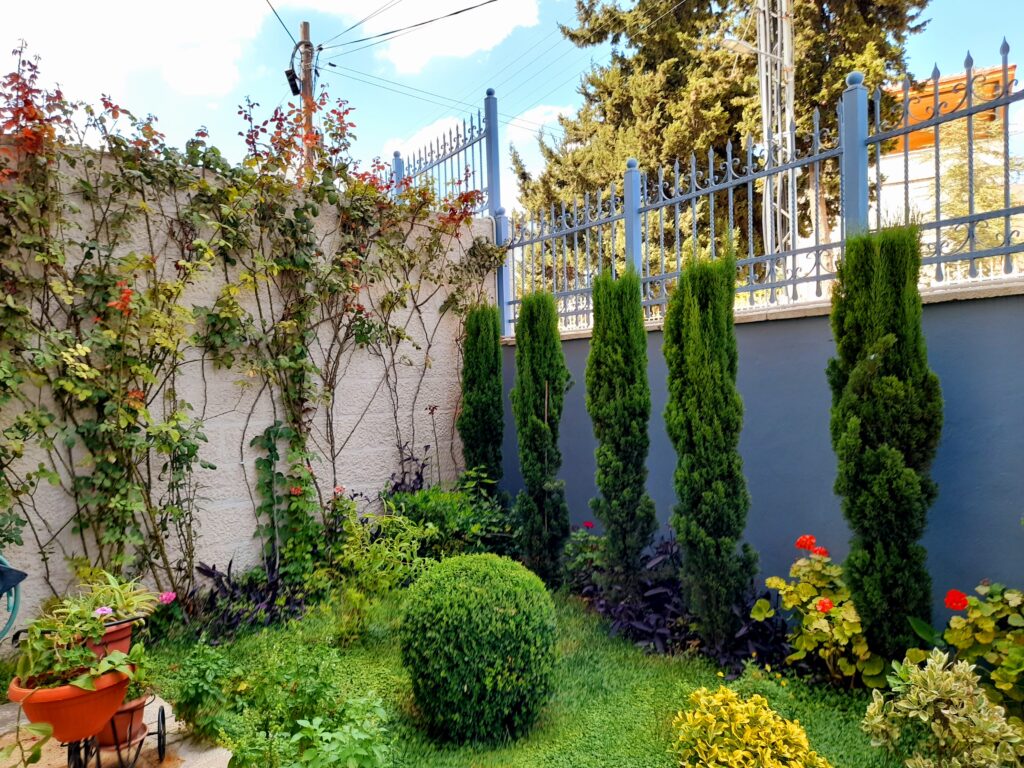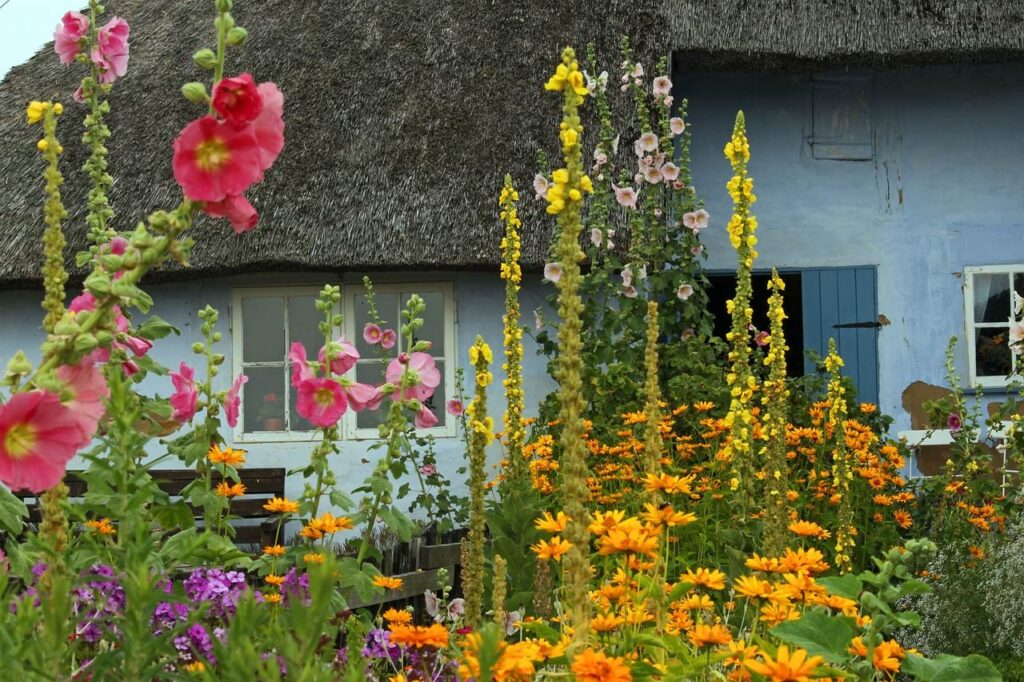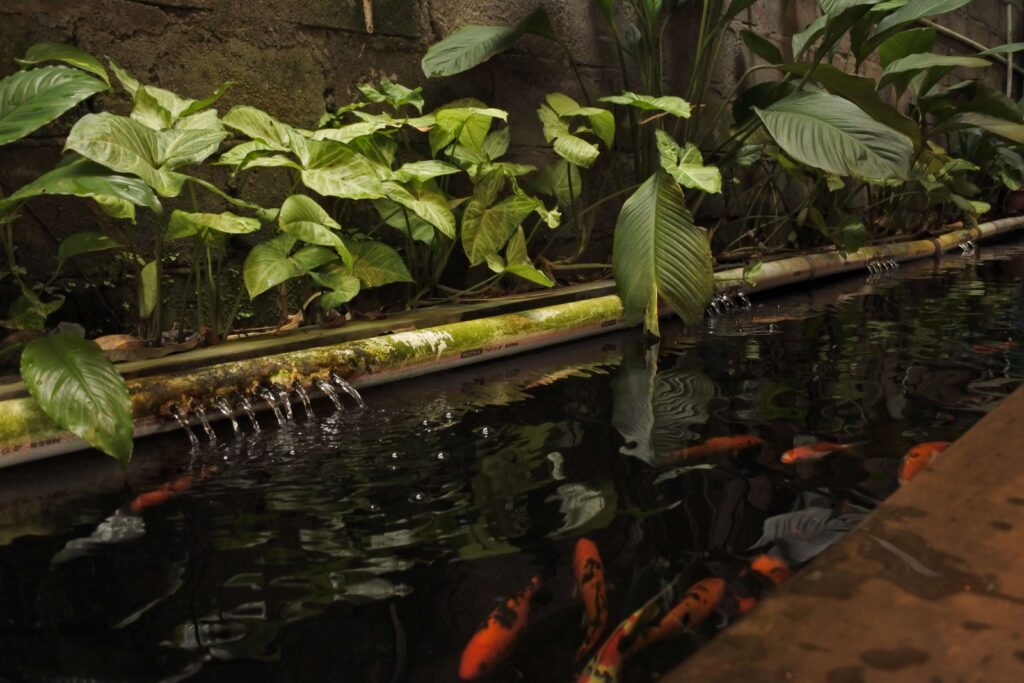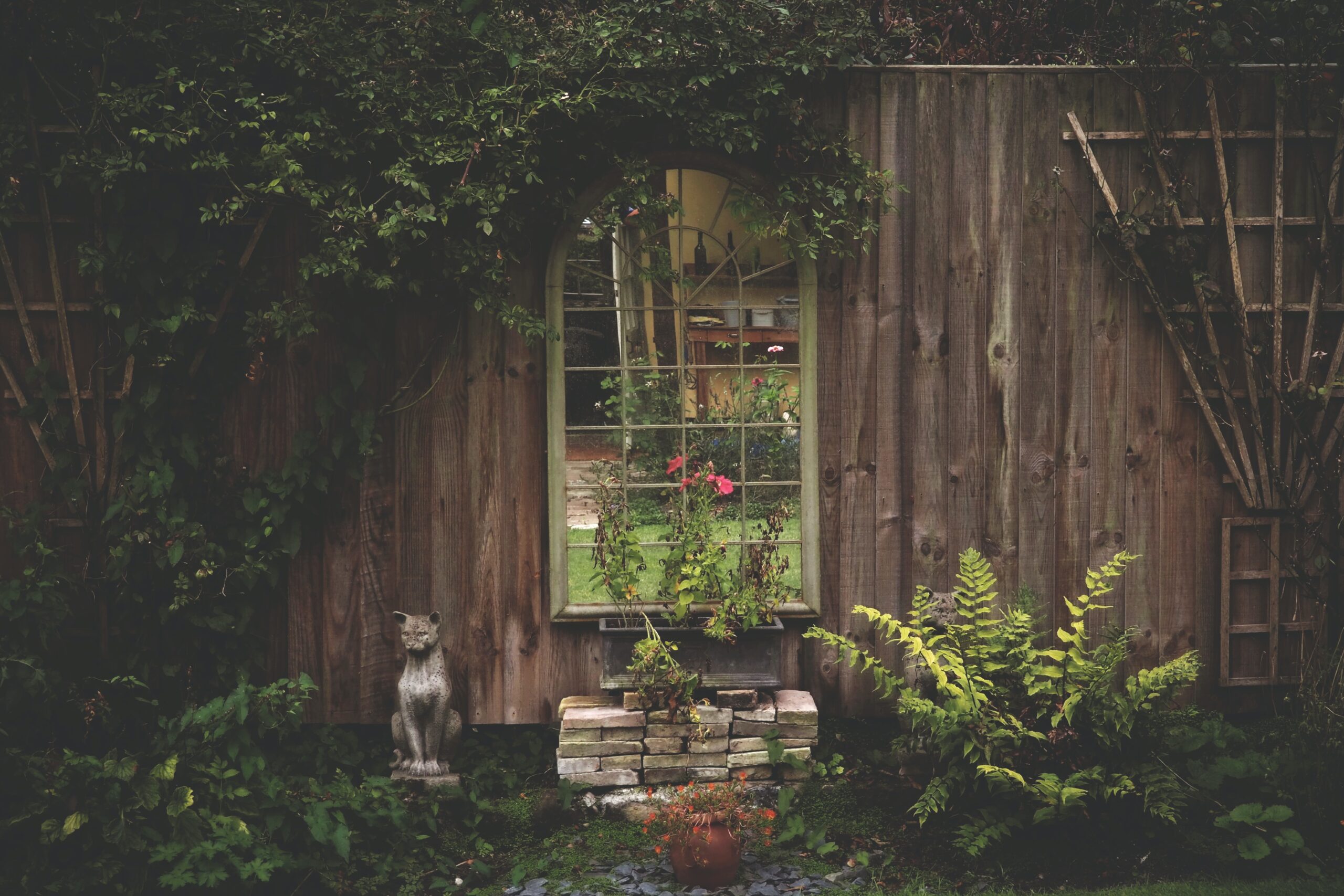Although it’s almost impossible to maintain a lush, green oasis in a drought-prone area, creating a thriving, sustainable xeriscape that requires much less water and maintenance is totally possible.
More and more people are ditching their green lawns for sustainable alternatives and creating magazine-worthy xeriscapes that wow neighbors.
Below, we’ll show you how to design, plan, and execute a low-maintenance xeriscape front yard that conserves water, attracts wildlife, and requires minimal maintenance.
Table of Contents
What is a Xeriscape?
A xeriscape is a low-maintenance garden that requires very little water and almost no maintenance. It incorporates hardscaping elements, such as pavers and stone features, and drought-tolerant plants. Xeriscape landscaping looks fantastic when properly executed; they just require a little bit of planning.
How Do You Create a Low Maintenance Xeriscape Front Yard?

Xeriscaping is an excellent landscaping approach that can help you save time, money, and water while creating a beautiful and low-maintenance front yard. Some of the best low-maintenance xeriscape tips for a front yard include using drought-tolerant plants, installing mulch, reducing the amount of lawn you have, and incorporating hardscaping features. Other helpful tips include using native plants, grouping plants with similar watering needs, and choosing the right irrigation system for your yard, but we’ll look at those in more detail later in the post.
Replace Your Lawn With These Drought-Tolerant Alternatives
Traditional grass lawns need ten liters of water per square meter of lawn surface per week. That’s around 15-20% of the average household’s water use. If you want to save some water, here are some great low-maintenance xeriscape front yard lawns.
Clover
You might already have patches of clover on your lawn, and you’ll notice it remains green even when the lawn starts turning brown in the summer. Clover is incredibly hardy and provides a great source of pollen and nectar for insects. The best part is it doesn’t need watering once established, so it’s a great drought-tolerant alternative to traditional grass.
Wildflower meadow
If you’d like some more color and biodiversity in your yard, go for a wildflower meadow. These are easy to grow and incredibly versatile. Most perennial flowers have deep roots that access groundwater, so they can thrive even in dry conditions.
Creeping thyme
With creeping thyme, you do get wildflowers that attract all matter of insects, so it’s not great for walking on. However, it thrives in dry soil and needs minimal maintenance once established, so it’s perfect for drought-prone climates.
Species-rich lawn
If you love the look of a traditional lawn, you can mimic that while getting the benefits of a drought-tolerant alternative with a species-rich lawn. These have a wonderful mix of species that help to stop your grass from dying off in the heat. When one species becomes weak, another will thrive to take its place.
Embrace Less Is More with Stone Pavers
Lawn alternatives can be great if you have an expansive yard that needs a lot of ground cover. But if you have a relatively small yard, you could go for the less-is-more approach with natural stone pavers.
One of the best natural stones for yard pavers is sandstone. It looks great, it’s long-lasting, and it requires almost no maintenance. It’s also porous, so when you do get some much-needed rain, it allows the water to drain and enrich the surrounding soil.
Pavers are great for making low-maintenance walkways in xeriscapes and can be brought to life with some drought-tolerant plants dotted throughout.
More Low-Maintenance Xeriscaping Tips

If you’ve got an empty space and you have no idea where to start with creating a low-maintenance xeriscape front yard, here are some tips.
Landscape Planning and Design
A professional-looking landscape starts with a good design. Sketch out the shape of your yard and begin by planning out the large features, such as pavers, decks, and flowerbeds.
It’s best to divide up your xeriscape into zones with different watering requirements, which will help you maximize water conservation. For example, you might have an “oasis” that requires the most water, a hardscaping zone that doesn’t require any water at all, and transition zones that only require minimal watering.
This is known as hydro-zoning and allows you to figure out ways to conserve water and utilize it in efficient ways.
Efficient Irrigation
Next, think about irrigation plans for your xeriscape front yard. During the first growing season, while your plants’ root systems are developing, you’ll need regular watering.
Most drought-tolerant yards don’t need an automatic watering system, but it’s still a good idea to plan how you will water, whether that’s manually, with a hose, or a sub-surface drip irrigation system.
If you can, add a water collection system for rainwater runoff to conserve as much water as possible.
Prep the Soil
Your xeriscape won’t thrive without proper soil prep. Start with a soil test, and then choose plants that will thrive in those conditions. You can also add soil amendments if you find out your soil is overly acidic or alkaline.
In areas where you’re planting drought-tolerant plants, add compost to boost the soil’s ability to hold water and add vital nutrients. Loosening the soil by turning it over will also aid root development and allow water and oxygen to penetrate more deeply.
Add Mulch
Organic mulch provides much-needed protection for the soil and helps lock in moisture. Just a thin layer around your xeriscape plants will reduce evaporation and erosion and moderate the soil temperature to help new plants thrive.
Top tip: do a quick litmus test on your soil to find out if it’s acidic or basic, then choose an organic mulch suited to that soil type.
Use Appropriate Turf
If you must have an area of turf for your kids or pets, take some time and choose the right one. Most traditional turfs require a lot of water to stay green and healthy, which defeats the point of creating a low-maintenance xeriscape front yard.
Consider some of the alternatives we talked about earlier. If you want to be able to walk on your grass, clover or species-rich turf are both great options.
Choose Native Plants
There are plenty of drought-tolerant plants on the market, but native plants will always thrive better than non-natives. If you’re unsure which drought-tolerant plants thrive in your area, visit a local nursery and ask a local grower. They’ll be able to give you specific recommendations and show you which plants like to grow together.
Group your Plants
Plants should be grouped together based on watering needs. If you have a few species that need watering more often, group them together to avoid overwatering plants that prefer drier conditions.
Grouped plants also provide shade for each other and retain moisture more efficiently, so you should see healthier growth. Just make sure each plant has enough space to thrive without suffocating its neighbors.
Incorporate Hardscaping
This is one of the easiest ways to create a beautiful, low-maintenance xeriscape front yard. Hardscaping elements such as rocks, gravel, and paving stones add visual interest to a yard without the need for water or regular maintenance.
Add in some gravel pathways, large pavers, a patio, or even some decorative stones and borders to give your yard style while conserving water.
Build Levels
If you’ve got a sloping front yard, levels give both form and function. Different levels of planting beds add visual interest and help conserve water by reducing the flow of runoff. Raised planters are also much easier to maintain than those at ground level, making it easy when it comes time to weed and tidy your yard.
Go Low Maintenance
Ornamental grasses, succulents, and cacti are all beautiful, low-maintenance plants that thrive in dry conditions and need very little care. They look at home in xeriscape landscaping and add that professional look to a landscape.
Incorporate different sizes, textures, and species to add as much visual interest as possible, and make sure to check on their watering requirements when deciding where to plant them.
Build a Feature Deck

A wood deck is another low-maintenance feature that can look great in a front yard xeriscape. It adds living space to your yard and can be used to disguise unusable areas of ground.
For an extra-low-maintenance option, composite decking doesn’t require painting and is even easier to clean than its wooden counterpart.
Don’t Forget Lighting
Lighting is usually forgotten about during landscaping, but it can make a huge difference to the look and feel of your xeriscape. Here are a few ideas for how to add lighting to your new xeriscape landscape design:
- Line pathways with solar lights to illuminate them at night.
- Highlight focal points, such as large plants or a stone feature, with up-lighting.
- String fairy lights around your deck.
- Add lights to your front door to draw people through your new xeriscape.
Incorporate Trees
Trees with small lacy leaves, like Honeylocusts, provide shade in the summer and easy clean-up in the fall. It can be tough to get young saplings to establish themselves in dry conditions, but more mature trees thrive in drought-prone areas. If you can, add some trees to your design for much-needed share and structure.
What is a Must-Have in Your Xeriscape?
When it comes to designing a low-maintenance xeriscape front yard, there are no right or wrong answers. You need to think about the level of maintenance and watering you are able to do and plan your design around that.
Aim for drought-tolerant, native plants, and incorporate hardscaping throughout for a seamless, professional-looking design.

